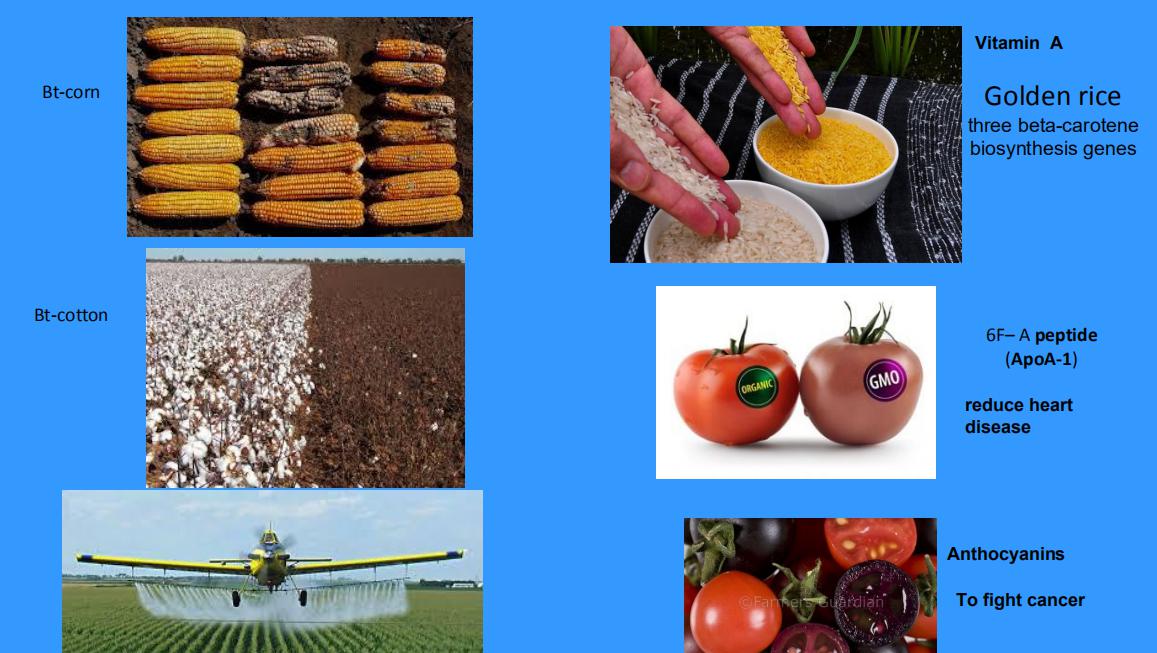作物是栽培的植物。人类依靠绿色植物将太阳光能转变为食物中的化学能,得以生存和发展。为了让植物更好地服务于人类,有两条途径改良植物的产出,一是改良它的遗传组成,二是改良它的生长环境。改良植物遗传组成的原理、方法和技术正是本课程要讲解的内容,改良植物生长环境的方法和技术是作物栽培学的内容范畴。这门课程的主旨就是讲解如何利用DNA技术培育植物新品种,包括创造跨物种的遗传变异的基因转移育种、精确改良基因组特定位点的基因编辑育种等。学习这门课程之后,你将获得100多年来逐渐形成的作物育种的原理、方法和技术,特别是近30多年来基于DNA技术发展起来的分子育种原理和技术的知识。这些知识可用于为国家为社会为人类培育大田作物的优良新品种(像中国的袁隆平等著名育种家那样),也可以用于为自己家的庭院美化之目的培育独特的花卉蔬菜林木新品种(像英国王室的菲利普亲王那样),还可以用于辨别社会媒体舆论的正确与否,不至于人云亦云。这门课程用英语授课,受众面可以扩大到所有懂英语的本学生、研究生和植物育种工作者;本课程的课件图文并茂,知识点导图脉络清晰;本课程各单元的内容都是由研究领域最熟悉的老师授课,深入浅出,融会贯通,易学易懂。
Crops are cultivated plants. Human beings rely on green plants to convert solar energy into chemical energy in food for survival and development.In order to make plants better serve human beings, there are two ways to improve plant output: one is to improve its genetic composition, and the other is to improve its growth environment. The principles, methods and techniques of improving plant genetic composition are the contents of this course. The methods and techniques of improving plant growth environment are the contents of crop cultivation. The main purpose of this course is to explain how to use DNA technology to breed new plant varieties, including gene transfer breeding by creating cross species genetic variation, gene editing breeding by accurately improving specific genomic sites, etc. After learning this course, you will acquire the principles, methods and technologies of crop breeding gradually formed over the past 100 years, especially the knowledge of molecular breeding principles and technologies developed based on DNA technology in recent 30 years. This knowledge can be used to breed good new varieties of field crops for the country, society and mankind (like famous breeders such as Yuan Longping in China), to breed unique new varieties of flowers, vegetables and trees for the purpose of beautifying their own courtyard (like Prince Philip of the British royal family), and to distinguish whether the public opinion of social media is correct or not, Not to follow suit. This course is taught in English, and the audience can be extended to all students, postgraduates and plant breeders who understand English. The courseware of this course is rich in pictures and texts, and the guidance of knowledge points is clear. The contents of each unit of this course are taught by the most familiar teachers in the research field. They are easy to understand and learn.
1.1 作物的驯化和早期植物育种 Acclimation of crops and early plant breeding
1.2 遗传变异来源和选择方案 Source of genetic variation and selection scheme
1.3 作物育种目标和分子育种 Breeding objectives and molecular breeding
重点:遗传变异来源和选择方案
Emphasis: genetic variation source and selection scheme
遗传标记和连锁图谱 Genetic markers and linkage maps
2.1 经典遗传标记和DNA分子标记 Types of genetic markers
2.2 染色体理论和连锁 Chromosome theory and linkage
2.3 遗传连锁图谱及其构建 Genetic linkage map and its construction
2.4 遗传图谱的整合 Integration of molecular maps
组学与阵列 Omics and Arrays
3.1 组学中的分子技术 Molecular techniques in omics
3.2 结构基因组学 Structural genomics
3.3 功能基因组学 Functional genomics
3.3 表型组学 Phenomics
3.4 比较基因组学 Comparative genomics
3.5 组学中的阵列技术 Array technology in omics
遗传育种中常用的群体 Populations used in genetics and breeding
4.1 群体的特点和分类 Properties and classification of populations
4.2 双单倍体群体的构建与应用 Construction and application of double haploid population
4.3 重组自交系群体和巢式RIL群体的培育 Breeding of RIL and nested RIL population
4.4 近等基因系群体的构建 Construction of NIL population
4.5 不同群体的比较-重组率和选择 Cross-population comparison: recombination frequency and selection
植物遗传资源:管理、评价和创新 Plant genetic resources:management, evaluation and enhancement
5.1 植物种质资源的概念和意义 The concept of germplasm and its significance
5.2 收集、保存、更新和繁殖 Collection, maintenance, rejuvenation and multiplication
5.3 评价、创新和利用 Evaluation, enhancement and utilization
5.4 种质资源信息管理 Information management of germplasm
复杂性状的分子解析-理论 Molecular dissection of complex traits-theory
6.1 基于单标记的基因位点定位法 Single marker-based approaches for gene mapping
6.2 区间作图法和复合区间作图法 Interval mapping and composite interval mapping
6.3 多区间作图法 Multi interval mapping
6.4 连锁不平衡作图法 Linkage disequilibrium mapping
复杂性状的分子解析-实践 Molecular dissection of complex traits-practice
7.1 复杂性状的QTL分离和效应分析 QTL separating for complex traits
7.2 跨物种的QTL作图 QTL mapping across species
7.3 跨遗传背景的QTL分析 QTL analysis across genetic backgrounds
7.4 不同生长发育阶段的QTL分析 QTL of different growth and development stages
7.5 选择性基因型鉴定和DNA混合分析 Selective genotyping and DNA mix analysis
标记辅助选择-理论 Marker-assisted selection-theory
8.1 标记辅助选择成功应用需要具备的5个前置条件 Marker assisted selection components
8.2 标记辅助的基因渐渗 Marker assisted gene introgression
8.3 标记辅助的基因聚合 Marker assisted gene polymerization
8.4 数量性状的标记辅助选择 Marker assisted selection for quantitative traits
标记辅助选择-实践 Marker-assisted selection-practice
9.1 标记辅助选择的各种选择方案 The selection scheme of marker assisted selection
9.2 降低成本增加效率的策略 Reducing costs and increasing efficiency
9.3 最适合标记辅助选择的性状 Traits most suitable for MAS
9.4 标记辅助的基因渐渗、基因聚合成功案例 Successful cases of marker assisted gene introgression and gene polymerization
9.5 标记辅助的一代杂种预测 Marker-assisted hybrid prediction
基因型与环境互作 Genotype-by -environment interation
10.1 多环境试验和环境刻画 Multi-environment trials and environmental characterization
10.2 基因型表现的稳定性 Stability of genotype performance
10.3 GEI的分子剖析 Molecular dissection of GEI
10.4 GEI 的育种 Breeding for GEI
基因的分离 Isolation of genes
11.1 通过计算序列分析方法分离基因 In sinico prediction
11.2 通过诱变方法分离基因 Identify the gene by mutation
11.3 通过cDNA测序方法分离基因 Cloning based on cDNA sequencing
11.4 通过图位克隆方法分离基因 Map based cloning
11.5 基因分离的其它方法 Other approaches for gene isolation
基因转移和遗传修饰植物 Gene transfer and genetically modified plants
12.1 植物遗传转化的各种方法 Transformation approaches for plants
12.2 表达载体 Expression vectors
12.3 基因选择标记 Selectable marker genes
12.4 基因整合、表达和定位 Transgene integration, expression and localization
12.5 转基因叠加 Transgene stacking
12.6 转基因作物商业化 Transgenic crop commercialization
知识产权和植物品种保护 Intellectual property rights and plant variety protection
13.1 知识产权和植物育种家的权利 Intellectual property and plant variety rights
13.2 植物品种保护策略 Plant variety protection strategies
13.3 分子标记在植物品种保护中的应用 Use of molecular techniques in plant variety protection
13.4 植物品种保护的实践 Plant variety protection practice
育种信息学 Breeding informatics
14.1 信息驱动的植物育种 Information-driven plant breeding
14.2 信息收集 Information collection
14.3 信息整合、检索和挖掘 Information integration, retrieval and mining
14.4 信息管理系统 Information management system
14.5 植物数据库 Plant database
支持分子育种计划所需的决策支持工具(软件)Decision support tools
15.1 种质和育种群体的管理与评价 Germplasm and breeding population management and evaluation
15.2 遗传作图和标记-性状关联分析 Genetic mapping and marker-trait association analysis
15.3 标记辅助选择 Marker-assisted selection
15.4 模拟和建模 Simulation and modelling
15.5 设计育种 Breeding by design


